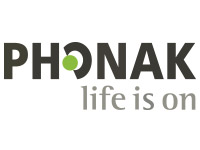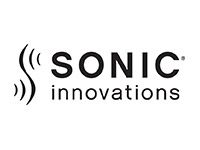
- Jan 17, 2014
Is Bluetooth making costly Hearing Aids redundant?
In the US there is a growing trend for people to bipass buying hearing aids from an audiologist or licensed hearing aid dispenser in favour of what are termed "personal sound amplifier products" (P.S.A.P.).
A growning number of people are having their youth catch up with them, in terms of exposure to loud music having a permanent effect on thier hearing.
A P.S.A.P. is designed to amplify sounds in a recreational environment and after a number of iterations are being designed with Bluetooth and now even come with apps for adjusting them.
Traditional proprietory hearing aids can only be adjusted by people with the applicable software usually audiologists.
The CS50+
One product (CS50+) has many of the same features that high-end hearing aids have, including:
- 16 channels to process sound
- directional microphones
- feedback insulation
- noise reduction
- voice prompts
- rechargeable battery
It comes with software that enables consumers to program it themselves and it is wireless and does not need clumbsy wires that some aids require.
Limitations
There are limitations to who can benefit.
A personal sound amplifier is really designed for patients who have normal or near normal hearing. It's not really designed as a hearing device to address significant sensorineural hearing loss.
Bettie Borton, the president of the American Academy of Audiology
"A personal sound amplifier is really designed for patients who have normal or near normal hearing. It's not really designed as a hearing device to address significant sensorineural hearing loss," said Bettie Borton, the president of the American Academy of Audiology.
It is also important that those with hearing loss be screened for potentially serious medical problems that may be causing the problem.
A new generation of P.S.A.P.s that utilize the latest wireless technology are offering promising alternatives for some people with hearing loss.
With people becoming aware and getting over the stigma of wearing hearing aids devices like the CS10 may attract a market.
One guy wears a tatoo, another an ear ring and the next hearing aids - big deal facing the reality of our social world is important - get out there and do it and who knows one day a company will develop and absolutely safe self programable hearing aid.
IPhone hearing aid devices
 GN ReSound revealed its "Made for iPhone" hearing aid, the ReSound LiNX, at the Consumer Electronics Show in Las Vegas; it uses proprietary wireless 2.4 GHz technology and Bluetooth Smart and is expected to be released worldwide in the first quarter of 2014.
GN ReSound revealed its "Made for iPhone" hearing aid, the ReSound LiNX, at the Consumer Electronics Show in Las Vegas; it uses proprietary wireless 2.4 GHz technology and Bluetooth Smart and is expected to be released worldwide in the first quarter of 2014.
And rather than a body-worn device, the iPhone itself will serve as the remote, enabling the user to switch between already-programmed "environments" (such as hearing in a restaurant, for instance, or listening to music).
With the iPhone's latest operating system, iOS7, users with two Made for iPhone hearing aids can listen to music on their iPhone in stereo via the Airplay feature or follow turn-by-turn directions in their car.
Though the company didn't announce a price, ReSound's president, Kim Herman, said that the LiNX will be sold at "a premium" to another ReSound product, the Verso, which starts at $2,900 and sells for as high as $3,500.
excerpts of this article are from a New York Times blog
Update 2019: The latest ReSound Hearing Aids act like wireless stereo headphones. So Bluetooth is being incorporated into the latest advanced hearing aids.
Update 2021: Over-the-Counter hearing aids includes a section on Bose SoundControl (Bose Releases Self-Fitting Hearing Aids).
Related Articles
Tags
Other Articles
16/04/2025 The ear is the gateway to your life »
11/08/2024 Phonak Audeo Sphere Infinio Hearing Aids »
04/06/2024 The Science of Signal-to-Noise Ratio »
05/12/2023 Understanding Body Language In Meetings »
21/11/2023 Slim Hearing Aids »
18/06/2023 Noise and non-hearing health »
12/06/2023 Using Conversation Visual Cues »
03/01/2023 A beginner's guide to Bluetooth »
08/12/2022 The Stigma of Wearing Hearing Aids »
16/08/2022 How to Become a Better Listener »
13/05/2022 Negativity Bias »
22/04/2022 Tinnitus who has it and why? »
14/10/2021 Lost or Damaged Hearing Aids »
20/10/2020 Deep Listening »
08/10/2020 Over-the-Counter hearing aids »
08/09/2020 Hear Better than Anyone in the Room »
12/08/2020 Sound Wavelength and Loudness »
03/03/2020 Localisation - identifying where sound comes from »
10/02/2020 Sudden Deafness »
17/12/2019 Hearing Better in Meetings »
09/12/2019 Can meditation improve hearing? »
18/11/2019 Over 50s »
30/10/2019 Wireless Hearing Aids »
07/10/2019 Cleaning and Maintaining Hearing Aids »
09/04/2019 What is the process for buying a hearing aid? »
06/02/2019 One Hearing Aid or Two? »
31/01/2019 Hearing Aid Cost Breakthrough 2019 »
29/08/2017 Hearing Aid Future is Here »
09/06/2017 ABC Checkout Warns on Hearing Aid Purchases »
13/04/2017 Listening better in a noisy world »
21/02/2017 Hearing augmentation devices - IQBuds »
08/12/2016 Childrens Hearing Linked to Social Disadvantage »
24/10/2016 Hearing with Less Effort »
25/01/2016 Seven Thousand Ways to Listen »
01/10/2015 Hearing Loss and Dementia »
06/03/2015 Myth: Hearing Aids do not work »
03/12/2014 ABC Background Briefing Hearing Aids »
20/11/2014 Buying a hearing aid for your parents »
13/01/2014 Research Online and Save »
08/10/2013 Phonak Q10 Hearing Aid Review »
13/05/2013 Is anyone listening to you »
12/04/2013 Hearing Aid Repairs »
05/04/2013 Will I benefit from a hearing aid? »
18/03/2013 Compare Hearing Aids »
13/03/2013 Audiologists are now mobile »
08/03/2013 Hearing and your work prospects »
18/12/2012 Hearing and your baby »
13/12/2012 Occlusion effect when wearing hearing aids »
24/10/2012 Hearing Aid Brands in Australia »
18/10/2012 ReSound Verso »
03/10/2012 Waterproof Hearing Aids »
28/05/2012 Music to your ears »
19/02/2012 Donate hearing aids that are no longer needed »
31/01/2012 An Invisible Hearing Aid »
26/11/2011 Who to see for sudden hearing loss »
03/11/2011 Restore your hearing or use aids »
13/09/2011 Not wearing your hearing aids »
29/08/2011 Audiologists Career Path »
26/08/2011 Bluetooth Hearing Aids »
Hearing Aid Referral
Get the best price and care from our network of professionals
FREE/no obligation
- Great Care
- Major Brands
Hearing Aid Brands in Australia









